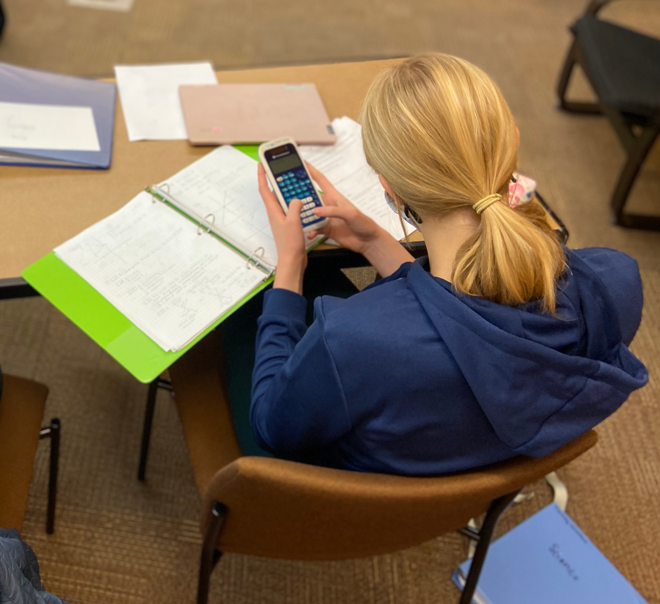Hyla Stories
Oh the Places You’ll Go

9th GRADE MATH: The limits of algebraic models and the possibilities they inspire.
Erik will tell you that sometimes the most exciting thing about a new math skill is not necessarily that students learn where and how it can be applied, but that they learn where and how it cannot. Case in point: finding the best-fit line in algebra class. Students analyze a data sample from a set window of time, find the slope, solve for the y-intercept, and voila: they now have an equation/model they can use to accurately predict results both within and outside of the original data window.
While a linear model has far-reaching real-life application (it’s a standard business tool used to show profit over time, for example), what happens next is the best part to Erik. “Once they have the equation in hand, we have a conversation where students determine if that is the best model of that data relationship over time, or whether it’s useful as a predictive tool only in a limited set of circumstances.” Realizing the limitations opens the door to seeing other (non-linear) data relationships. Discovering such quadratic, exponential or logarithmic models allows students to apply their knowledge into even more complex scenarios in the world around them – like studying population growth in biology class down the hall, or projectile motion in physics class. Beyond high school, students can use non-linear modeling as economists to understand dynamic systems, as epidemiologists to predict pathogen spread, or as structural engineers to prevent resonance in bridge design. So when we see a student finding the best-fit line at Hyla High School, it’s exciting to think where this could take them.
